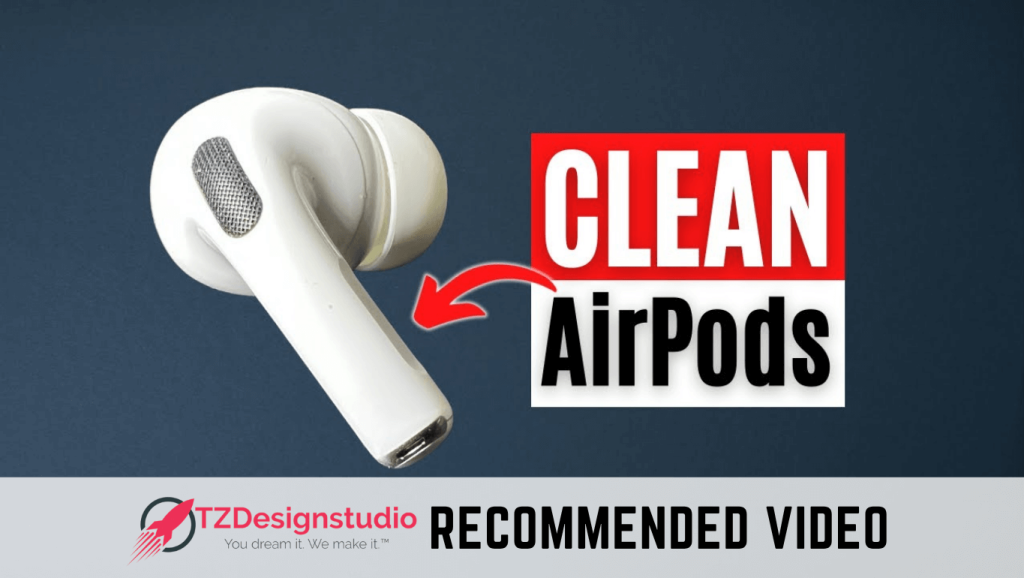Here’s a confession: web design experts can spot a pixel error from a mile away, but when it comes to AirPods Pro, even pros secretly wage war on hidden earwax. Picture this: you’re prepping for a call with a major client and suddenly, your audio sounds like it’s coming from underwater. The culprit isn’t software or hardware—it’s gunk. This post shares not just the most effective cleaning methods, but also the hilarious (and surprisingly relatable) blunders that happen along the way.
Mesh Screens, Muffling, and the Great Mystery of Lost Sound
Anyone who has spent time troubleshooting their AirPods Pro knows the sinking feeling when the sound just isn’t right. The culprit is often not a hardware failure or software glitch, but something far more mundane: dirty mesh screens.
Why Mesh Screens Steal Your Sound Quality
The mesh screens in AirPods Pro are tiny, but their impact is massive. These screens act as gatekeepers for sound, keeping out debris while letting in music, calls, and the world around you. However, when earwax and dust build up, they create a barrier that muffles audio, reduces dynamic range, and can even make calls sound distant or unclear.
The Three Problem Areas
- Ear Tip Mesh: Located just behind the removable ear tip, this mesh is often the first to collect wax and debris. A clogged ear tip mesh means your favorite song will sound flat and lifeless.
- Speaker Mesh: The most crucial area for sound delivery. When blocked, you’ll notice muffled sound and a dramatic loss in dynamic range.
- Microphone Mesh: Often overlooked, the mesh at the base of the stem is vital for noise cancellation and transparency mode. Stubborn debris here can lead to poor call quality and features that don’t work as expected.
It’s easy to focus on the obvious mesh screens, but the smallest one—tucked away at the base of the stem—often escapes attention. As one user put it: “When my transparency mode sounded more like silent mode, I knew I’d ignored the mesh screens too long.”
How Noise Cancellation and Transparency Mode Quietly Suffer
Both noise cancellation and transparency mode rely on clean mesh screens for optimal function. When debris clogs the microphone mesh, these features can degrade or stop working entirely. Users frequently report that transparency mode becomes ineffective, making it hard to hear the environment or conversations.
Regular cleaning of all mesh screens isn’t just a suggestion—it’s a necessity for anyone who wants their AirPods Pro to sound as good as new.
DIY Cleaning: Between Official Advice and Real-Life Improvisation
When it comes to cleaning AirPods Pro mesh screens, Apple’s official recommendations have evolved. The latest Apple guidance suggests a two-step process: first, use micellar water with a soft-bristled toothbrush to gently clean the mesh, then rinse with distilled water and let the AirPods dry for at least two hours. This method sounds scientific, but it raises a practical question: does anyone actually keep micellar water in their kitchen drawer?
Apple’s Official Method
According to Apple, micellar water acts as a gentle agent to lift debris from the mesh, while distilled water rinses away any residue. The process is simple in theory, but the supplies are far from universal. As one user quipped: “I can’t be the only one who thought distilled water belonged in a vodka bottle and not on my AirPods mesh.”
Everyday Tools That Actually Work
In real life, most people reach for what’s on hand. The classic combination involves 70% isopropyl alcohol (which Apple also approves for surface cleaning), cotton swabs, and sometimes an old toothbrush. These tools are effective, accessible, and—when used carefully—safe for the mesh and body of the AirPods.
- Isopropyl alcohol (70%): Quickly evaporates, minimizing moisture risk
- Cotton swabs: Perfect for targeting stubborn debris on mesh and in seams
- Soft-bristled toothbrush: Great for dislodging buildup in mesh and cleaning the case
The technique is straightforward: dampen a cotton swab with alcohol (not soaking wet), gently rub the mesh, and use the toothbrush for stubborn spots. The alcohol’s fast evaporation is a major advantage—no need to wait hours before using your AirPods again.
Common Cleaning Fails
Despite the simplicity, DIY cleaning isn’t without pitfalls. Over-wetting the mesh—whether with alcohol, micellar water, or distilled water—can lead to moisture seeping into the speaker or microphone ports. This can muffle sound or, worse, damage internal components. The lesson: always use a lightly dampened swab, never a dripping one.
Don’t Forget the Case and Ear Tips
When it comes to cleaning your AirPods Pro, it’s easy to focus on the visible mesh and forget the real troublemakers: the silicone ear tips and the case’s hidden crevices. These are the places where grit, ear wax, and pocket lint quietly gather, often escaping notice until sound quality drops or charging issues appear.
Ear Tips: The Frontline of Gunk
The silicone ear tips are magnets for ear wax and debris. Over time, buildup here can muffle sound and block the mesh. The cleaning process is straightforward:
- Gently remove the ear tips from each AirPod
- Rinse them under running tap water
- For stubborn debris, use a Q-tip dampened with isopropyl alcohol
- Let the ear tips dry completely before reattaching
Case Crevices: Where Charging Problems Begin
The AirPods Pro charging case is notorious for collecting dust and lint in its seams, especially around the hinge and the charging contacts. These hidden villains can disrupt charging, leaving you with dead earbuds at the worst possible moment.
- Use a soft-bristled toothbrush to gently scrub around the hinge and inside the lid
- For the charging wells, use a Q-tip lightly dampened with alcohol
- Focus on the metal contacts at the bottom—debris here is a common cause of charging failures
As one cleaning enthusiast put it: “Nothing says ‘multitasking’ like cleaning your AirPods during a client call—until you realize everyone can hear the scrubbing.”
What If Your AirPods Could Talk Back?
After nearly an hour of scrubbing, blowing through mesh vents, and chasing stubborn debris from every crevice, it’s easy to imagine a world where AirPods Pro could talk back. Picture this: you finish a meticulous cleaning session and suddenly, your AirPods light up with a tiny voice saying, “Congrats, you finally cleaned me!” Wouldn’t that be the ultimate badge of honor?
In reality, AirPods Pro cleaning is a silent, solitary ritual. There’s no ‘thank you’ notification or digital confetti. Yet, as any web design expert at TZDesignstudio knows, the smallest details can make or break performance. Ignoring a bit of mesh debris is like leaving a stray <div> in your code—eventually, things slow down, features glitch, and the whole experience suffers.
Imagine if Apple introduced a self-cleaning mode or a ‘mesh debris detection’ app. Maybe your AirPods could ping your phone with a gentle reminder: “Hey, it’s been a while since my last deep clean. Want to keep the noise cancellation sharp?” Until then, the best cleaning routine remains a blend of patience, Q-tips, and the occasional sigh of frustration.
Of course, the cleaning journey is never without surprises. Many users have discovered lost ear tips in the oddest places—under car seats, inside gym bags, or wedged between couch cushions. Others have found mysterious dirt lurking in the charging case’s hinge, a reminder that hidden grime is always waiting to sabotage performance.
Ultimately, the unexpected art of AirPods Pro maintenance is about more than just keeping things tidy. It’s a lesson in vigilance: always check for hidden grime, just like you’d scan your code for errors before launch. The payoff is lasting performance, uninterrupted sound, and the quiet satisfaction that comes from knowing you’ve tackled the invisible enemies of your favorite tech. While AirPods may never talk back, a well-maintained pair will always reward you with crisp audio and reliable function—no digital applause required.
TL;DR: When your AirPods Pro start sounding fuzzy, the fix might be as easy as a quick mesh screen cleaning—no fancy kit required. Isopropyl alcohol, a Q-tip, and a healthy dose of humility work wonders. Regular care revives sound and prevents those embarrassing call-muffles.

![AirPods Pro Problems? Fix Most Audio Issues With These Cleaning Tips - [FULL GUIDE]](https://www.tzdesignstudio.com/wp-content/cache/flying-press/95ba783fa628aa8a7b9fe14866cc4c4e.jpg)



